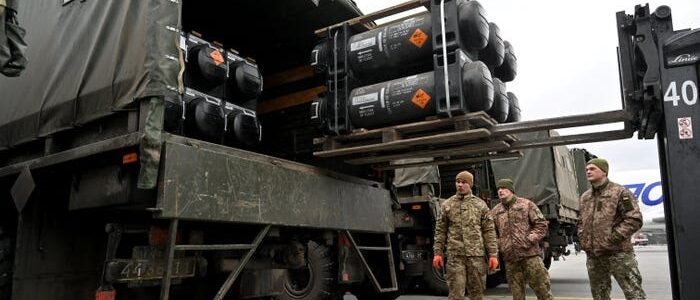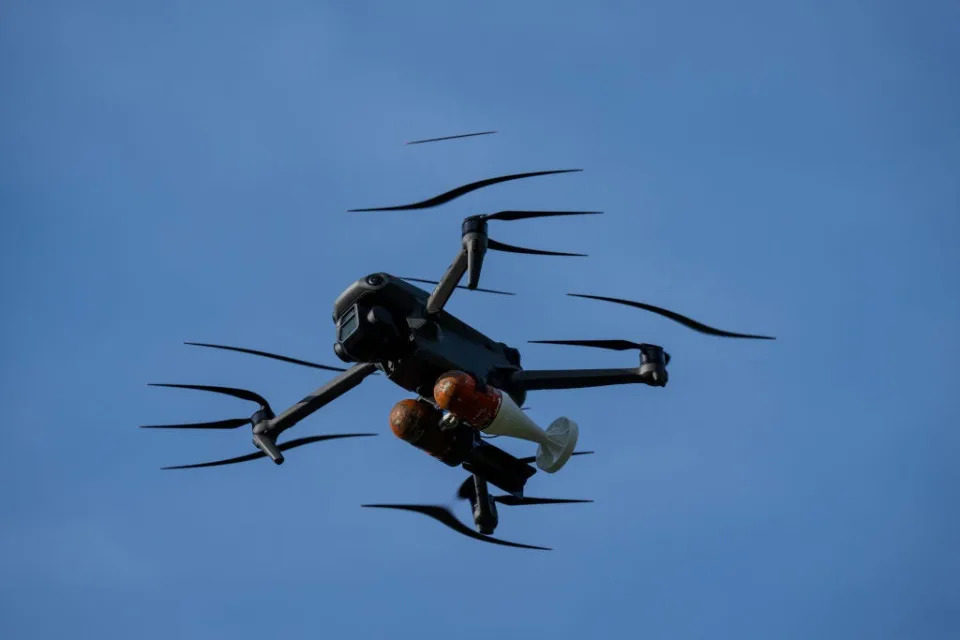
Electronic warfare
One area in which the US has revealed its shortcomings is in electronic warfare. Russia’s jamming systems have created major issues with Western precision weaponry, including GMLRS rockets and Excalibur artillery shells, as previously reported by Business Insider.

Russia’s electronic warfare units have become increasingly adept at scrambling the GPS navigation systems used to guide the missiles and shells to their targets, sending them off course and rendering them useless.

“The war has revealed that some of the US precision-guided munitions fail in a highly contested electromagnetic environment,” Stacie Pettyjohn, a military analyst at the Center for a New American Security, told BI.
In contrast, cheap, off-the-shelf drones have played an enormously important role in Ukraine. The Ukrainian military has used the drones to offset some of the disadvantages in manpower and equipment it faced against Russia. It has used them to surveil enemy positions, guide artillery strikes, and fitted them with grenades or explosives to attack enemy positions.

Ukrainian drones are also susceptible to electronic warfare, but Ukraine has produced technology to evade jamming signals and exploit gaps in Russia’s electronic warfare defenses.
The use of drones on the battlefield
Maneuvering, concealing, and supplying troops on battlefields under constant drone surveillance is another conundrum Pentagon experts are grappling with, said Pettyjohn.
According to reports, the Pentagon is rapidly seeking to improve its ability to deploy drones to support troops and take out enemy drones, which military analysts believe will be ubiquitous on the battlefields of the future. At the moment, said Pettyjohn, US army units have only a few, old drones per unit.
“One of the key lessons from this conflict is the democratization of precision strike weapons is making the battlefield incredibly lethal,” said Pettyjohn.
A shortage in weapons
The Ukraine war has exposed problems not just with the quality of weapons, but with the US’ capacity to produce them in the quantity Ukraine needs.
For decades, the US prepared for war against militant groups such as the Taliban in Afghanistan. But the Ukraine war more closely resembles conflicts such as World War I, with two militaries in well-defended positions firing tens of thousands of rounds of artillery a day at each other to wear the opponent down. And the US military is yet to adjust.
In contrast, Russia has placed its economy on a war footing, massively increasing the amount of military equipment it is able to produce and placing Ukraine at a serious disadvantage.
“The biggest problem that the Ukraine war has exposed with American weapons is that the Pentagon simply does not buy enough munitions for a large-scale protracted conflict,” said Pettyjohn.
She added that the recent Ukraine aid bill, which also contains billions for US weapons production, doesn’t fix the problem.
“This a Band-Aid that doesn’t fix the fundamental problem. The Pentagon simply needs to buy more weapons on an annual basis,” she said.
During the recent US aid block, Ukraine was being outfired at a rate of 10-1 on parts of the front line. Throughout the war, Ukraine’s Western allies struggled to provide enough artillery and ammunition rounds.
But though the war has posed serious conundrums for Pentagon chiefs, it’s also shown that many of its weapons systems remain much better than those of its opponents.
US Patriot air defense systems have shielded Ukrainian cities from mass Russian drone and rocket attacks. And though some have been intercepted, HIMARS long-range missiles continue to do devastating damage well behind the Russian front lines. Meanwhile, the Switchblade 600 exploding drone has been an important weapon for Ukraine in targeting Russian artillery batteries and troops, according to reports.
A high cost
A problem with US air defense systems, though, is that the missiles cost much more than the cheap drones they’re often being used to shoot down, Pettyjohn said, presenting US military planners with another problem to grapple with.
“Firing expensive missiles at cheap drones and missiles is not a sustainable strategy or one that will enable the United States to prevail in these fights which require endurance,” she added.
A core lesson, said Pettyjohn, is that quantity matters as much as quality.
“The US should have learned that mass matters in addition to precision. The US military needs more artillery shells, missiles, and drones than it currently has and an industrial base that can scale production of these critical systems,” said Pettyjohn.
Credit: Yahoo News
